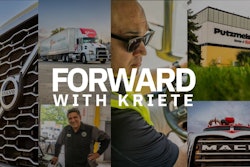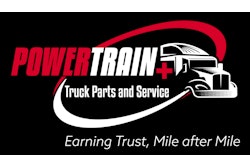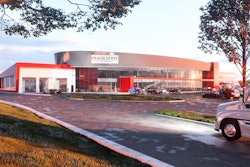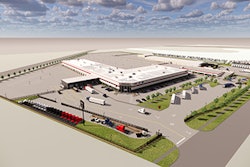
Change is inevitable. Especially in an industry changing as rapidly as heavy-duty trucking.
Sometimes, those changes demand a company change its branding.
Susan Fall has been watching companies in the industry manage change for 30 years through her company LaunchIt public relations. She says the key to success is telling your story.
“Be forthright. Be open. If you did have a negative situation happen, name it,” Fell says. “We’re under new management, we’re a new company, we have a new face. Trucking is about trust and relationships and telling you story, even if it’s a bad story. Don’t think we don’t know it, especially in trucking.”
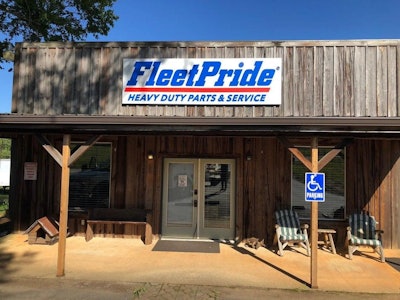
Rebranding Through Acquisition
FleetPride has made a slew of acquisitions this year — eight thus far — including the purchase of Raney’s Truck Center, the August purchases of Integrity Fleet Services and Knowles On Site Repair and the purchase of RPM Truck Repair, among others.
Jeff Crosson, FleetPride’s vice president of business development, leads the company’s acquisitions process. It targets successful companies that operate similarly to FleetPride, Crosson says.
“The more a business looks like us, the more effectively we can support it going forward.”
He says FleetPride knows that part of the target business’s success is due to its people, and the company wants to do what it can to support them during and after the acquisition and rebranding.
“From our perspective, relationships are more driven by the people in the business than the brand itself,” Crosson says. FleetPride recognizes change is hard and an acquisition can be disruptive for a company’s employees. It’s their livelihood at risk, he says, and taking care of legacy employees is a top priority during the transition to FleetPride branding.
“Every business is unique and we understand that. It starts with having an open mind and finishes with understanding what is important to the customers.”
More than once, Crosson says, FleetPride has acquired more than just the buildings and the books. It’s found a new idea or process that it can leverage across all of its locations.
“Every company needs to decide what best fits their strategy and prioritizing what’s best for your customers is a great place to start,” he says.
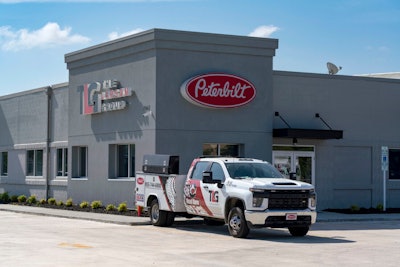
A New Look for a Growing Company
The Larson Group, which started as a single Peterbilt dealership in 1987 and now includes more than 20 locations across eight states, also believes in putting people first when it comes to change.
Heather Caldwell, director of marketing, says the family owned and operated company rebranded in 2019. It was time the branding reflected the company’s growth, uniting all of its dealerships. TLG changed dealership names from “Peterbilt of” to “TLG Peterbilt.”
“Whether a customer is visiting a dealership in Missouri, Ohio or North Carolina, we want them to receive the same welcome and know they aren’t just in a Peterbilt dealership, they’re in a TLG Peterbilt dealership,” she says.
Like FleetPride, TLG started with its people.
“Change is hard, even when it’s time for it to happen and even if it is a positive change,” Caldwell says. With that in mind, TLG took its rebranding plan to its employees. Throughout the entire rebranding process, internal communications kept employees updated.
“We worked very hard to create a communication plan around the rebrand, both for our employees and customers to ensure they knew while TLG was getting a new look, nothing was changing at the heart of TLG — our values, dedication and our customer relationships are still the same,” she says. “Our hard-working team is out there every day representing TLG and working with our customers. It was important for them to know why we rebranded and that they are still representing the same TLG so they could communicate that to our customers.”
Communicating the rebranding to its customers was the second step.
Caldwell says TLG used a variety of networks, including social media, the press and print materials to communicate the rebranding details to its customer base. As trucking is a relationship-based industry, it was important to reiterate to customers even though names and logos were changing, this was the same TLG Peterbilt dealership they’ve always known.
She agrees with Fell that an effective way to communicate rebranding to customers is to simply tell them why.
“It’s so important that your employees and customers, many who’ve been with you for a long time, understand [why you’re rebranding],” she says. “Making it clear they know you are still the same company with the same values — just with a new look.”
The Work that Goes Into a Rebrand
Next comes the behind-the-scenes work, such as changing out logos and everything that has your company branding on it, such as uniform shirts and letterheads. At TLG, the Larson family played a role in developing a new, modern logo that still represented what TLG is at heart, but with a modern look that could grow with the company.
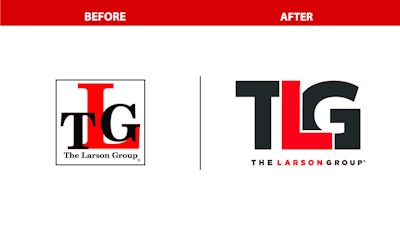
For long-time customers and employees, TLG’s logo really meant something to them, Caldwell says.
“It’s why we really approached this as a brand refresh and made sure the core elements of the previous logo were still there in the new one,” she says.
Change is difficult, but it’s necessary.
“It’s so important that your employees and customers, many who’ve been with you for a long time, to understand [why you’re rebranding],” Caldwell says. “Making it clear they know you are still the same company with the same values — just with a new look. Don’t be afraid to do it. While change is always hard, you can’t be afraid to evolve. As a company grows and changes, its look needs to grow and change with it.”

Wabash: Unifying and Rethinking
In 2022, Wabash rebranded the corporation and brought in the company’s six brands — Benson, Brenner, Bulk Tank, Supreme, Transcraft and Walker.
“The decision to rebrand the company and our family of brands was a strategic choice that will help the company in its long-term growth strategy,” President and CEO Brent Yeagy said at the time. “This rebrand reflects our own transformation and unites our legacy brands as ‘One Wabash’ — the visionary leader in transportation, logistics and distribution that is making sweeping changes to prepare our customers for a very different world.”
As part of its rebrand, Wabash didn’t just redo its logo. Its rebranding included an optimized organization structure, One Wabash, and a unique value proposition, the Visionary Leader, which tells the story of how Wabash is breaking new ground in the industry.
Such a mighty effort necessitated bringing in a partner to help, says Communications Director Dana Stelsel. And again, communication was key.
“Embracing the brand, generating excitement and gaining alignment on why this was a positive change had to happen inside our walls first, before extending the new brand to external stakeholders,” Stelsel says. “Our marketing team led the project, but leaders across the organization played key roles throughout the entire scope of the rebrand work, from start to finish.”
The effort including an internal and external stakeholder interview process, which was used to validate where the brand could go.
Stelsel says a rebrand brings a unique value to a company. It’s more powerful than just a new logo, if managed properly. Focus on whether or not your current brand represents your company today as well as what your company will be in the future.
“If not,” Stelsel says, “Develop a new message and drive consistency of that message across the organization and to all stakeholders.”
